First lets examine this truly sublime video of Okano sensei practicing Okuri ashi barai.
Now this video is probably how most of you have been taught and practice Okuri ashi barai
First of all I’m not saying that the above method is wrong or that it is bad technique. However, I believe the method shown in the Okano video is better , more realistic and incorporates key principles better.
So let’s look at what Okano does differently. Well he practices the technique against an uke who is retreating in a straight line and then he performs a large outward step diagonally to his right causing uke to adjust his movement pattern and creating a reaction that makes a perfect moment of opportunity for Okuri ashi barai.
Okano begins advancing towards his retreating uke following a normal stepping pattern:
Beginners an important note. In ashiwaza drills tori should always establish the pace of the practice. Also many beginners mis-step so tori advances with his left uke retreats with his left.
To set a good rhythm and ensure that a correct stepping pattern is in place, assuming a right hander practicing with another right hander, rotate your sleeve hand slightly away from you and push straight forwards as if your forearm was a piston. You perform this action simultaneously with you stepping forward with your left foot. This not only ensures uke reacts appropriately, but also signals your clear control of the rhythm and direction of movement.
After several steps Okano is comfortable with the rhythm and is ready to initiate the action-reaction sequence.
Stepping normally with his left he prepares to take an exaggerated step diagonally outwards with his right.
Seen from another angle:
Mid way through the diagonal step
The full extent of just how deep a diagonal step Okano takes, this is more for demonstration and practice purposes than for randori. To drill the concept into your movement.
This action sets in motion uke’s reaction which is to adjust his stepping pattern in a way that will bring his feet together. Simultaneously it creates a situation of what I pompously call ‘dynamic delay’.
The red charts the direction of uke’s right foot towards his left.
Dynamic delay is very hard to capture in words or in still images, however, if you watch the video again you will see what I mean. The concept is also well demonstrated in this video
Especially at around 1:40.
Okano, in possession of perfect timing, utilises this dynamic delay to bring his sweeping foot through so that it catches uke’s retreating right foot at the perfect moment.
Seen from a different angle
The action reaction sequence set in process by the diagonal outwards step allows Okano to accelerate the motion of the unweighted retreating right foot with his sweeping foot so that it contacts uke’s left foot as it is being unweighted, but before the right foot can be re-weighted.
As this image demonstrates uke’s feet are now totally unweighted and Okano’s sweeping action takes them both clear of the floor.
From a different angle:
The inevitable occurs, a beautiful ippon throw.
Now, after that waffle breakdown, why I believe this to be a better model for teaching and practicing Okuri ashi barai.
Firstly pace, pace and rhythm are fundamental to ashiwaza. In the usual method of the sideways skipping pace management by tori becomes very difficult. Uke and tori end up either in a race together to see who can do it the fastest, or completely at odds leaving tori either too far ahead or too far behind uke. The advantage of the straight walk then diagonal step method, catchy name I know, is that tori has complete control over the pace throughout and can pick his moment to initiate the diagonal step when he is comfortable with the rhythm of the drill.
Hands and feet, because of the pace problems outlined above the sideways skip method means it’s very difficult for people to coordinate their hands and their feet because they’re usually in such a muddle over getting the feet right the hand action goes out the window or vice versa. Because of tori’s control over the pace and moment of attack the ability to coordinate the hands and feet is much increased. Also the drill can be broken down into stages, first walking through with a partner developing just the diagonal step, with only the hands resting on each other. Then walking through incorporating a gentle sweeping action brining the two feet together rather than a full sweep, with only the hands resting on each other. Then you can bring in the proper grips with a gentle sweep, working on coordinating kuzushi and the foot action. Then proper grips with a full sweep. This incremental method takes longer, but is a much richer learning process developing the key coordination and movement skills at each step.
Realism. One of my major gripes with the sideways skipping drill is that people get their lesson on it then when randori comes they immediately try taking over 9000 sideways skips to get the rhythm. Their opponent isn’t a retard and knows what they’re trying to do and doesn’t co-operate and the result is total failure, disappointment combined with a sense of being misled and abandonment of the technique.
Using the method in the Okano video is better because it teaches ‘leading uke’s mind’ and the key principles of changing direction, pace and understanding of weight transfer that are required for good ashiwaza. The awareness that it isn’t about gallivanting round the mat like a prize stallion and that the key lies in subtlety and awareness of movement and moment of opportunity is a much better ashiwaza mindset to instill and much more realistic for randori and competition.
So to close, I don’t believe the side skip method is wrong or bad practice or that no one can learn Okuri ashi barai from it. However, I believe its quite a difficult drill and is easily abused and misunderstood by beginners and not so well informed coaches. I believe the method demonstrated in the Okano video is simpler, easier to learn and teaches the fundamentals more effectively.
As a final thought I’ll leave you with this video of Osawa sensei now 10th dan then 8th dan demonstrating Okuri ashi barai.



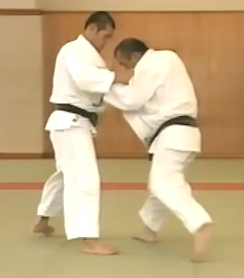
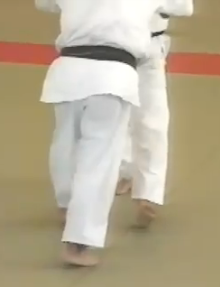
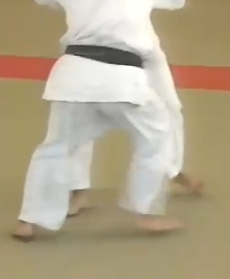

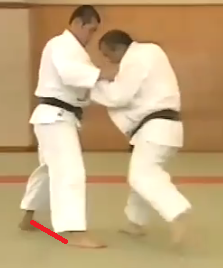

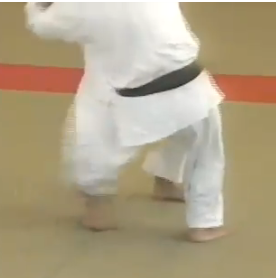


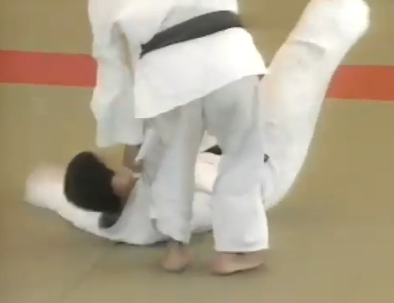
I would love more posts like this one. I'm always looking for better training methods.
ReplyDeleteIn your article you talk mostly about the footwork in this throw. I'd like to ask you for more details on the hands.
ReplyDeleteIn the first video you posted above of Okano sensei he is gripping lefty and sweeping with his left foot. In the last video you posted above of Osawa sensei he is also sweeping with his left foot, but he is gripping righty. Which version would you consider the "standard" version to teach to beginners first and which one would you consider the "variation" to learn later?
No answer?
ReplyDeleteSorry Bob, missed your comment.
ReplyDeleteThe standard method is usually to sweep the sleeve side leg. So holding right handed with your left hand on the sleeve you would sweep with your left leg. Holding left handed with your right hand on the the sleeve you would sweep with your right leg.
The 'non-standard' version is done the way Okano does it sweeping with the lapel side leg. Really though its not 'non- standard' just that normally people teach the throw. Sweeping from the sleeve side, because its easier to apply kuzushi and the fall is easier to take for uke.
So to make it easier to learn the proper kuzushi and to give your uke the safest and easiest fall I would start sweeping from the sleeve side. The ideal situation is to be proficient with the throw sweeping to both the sleeve and lapel side so that you maximise your throwing potential.
Thanks for your reply!
ReplyDeleteNext question: In the "standard version" in which you sweep on your sleeve grip side, do your hands perform a similar action to what you describe in your Attacking the Chest article? As in, the tsurite drives toward uke's chin and the hikite pulls downward toward your hip? That's how I was taught to do it in nage-no-kata. I just want to make sure that's what you would do in this practice format too.
I was taught that you drive straight upwards with the tsurite/lapel and drive diagonally upwards and into uke with the hikite/sleeve. Placing uke's elbow against their side and then driving diagonally upwards as if trying to make their elbow end up where their opposite shoulder is.
ReplyDeleteDaigo writes in his Kodokan Judo throwing techniques:
'At that moment tori sends his right foot to the right side,[tori] lifts up with the right hand, and lifts uke up with the left hand by pushing him up slightly diagonally to the left in an upwards curving movement'
I've not been taught to pull uke's hikite/ sleeve down and towards tori's body in either this method or nage no kata. Always upwards and into uke as Daigo says 'in an upwards curving movement'.
Although this maybe a case of text descriptions not really conveying the exact movement. Or, no offence meant, maybe even you slightly misinterpreting what your coach was saying.
It's certainly possible. Thanks for the help!
ReplyDeleteI've got another question: Harai-tsurikomi-ashi is very similar to okuri-ashi-barai in my perception. I'm pretty sure I've seen it practiced in the same format as above. My understanding is that the defining difference is that you only sweep one foot in harai-tsurikomi-ashi, and therefore the timing is a bit different.
What is the difference in the hands? Do you do the same thing as in okuri-ashi-barai? Or do you do what you describe in your Tsurikomi article?
Bob, you've just given me an idea. I'll get back to you with a full explanation in a bit.
ReplyDeleteSounds good!
ReplyDeleteHere you go Bob.
ReplyDeletehttp://thedifficultway.blogspot.com/2011/02/whats-difference-ashiwaza.html
A new hero has soared into the firmament, a new hero who will help me bravely go where no judoka as crap as myself has ever gone before! That hero is you, Mr A! Many, many thanks for this, my first taste of this unparalleled resource.
ReplyDeleteMichael